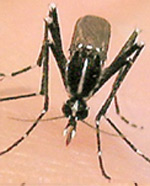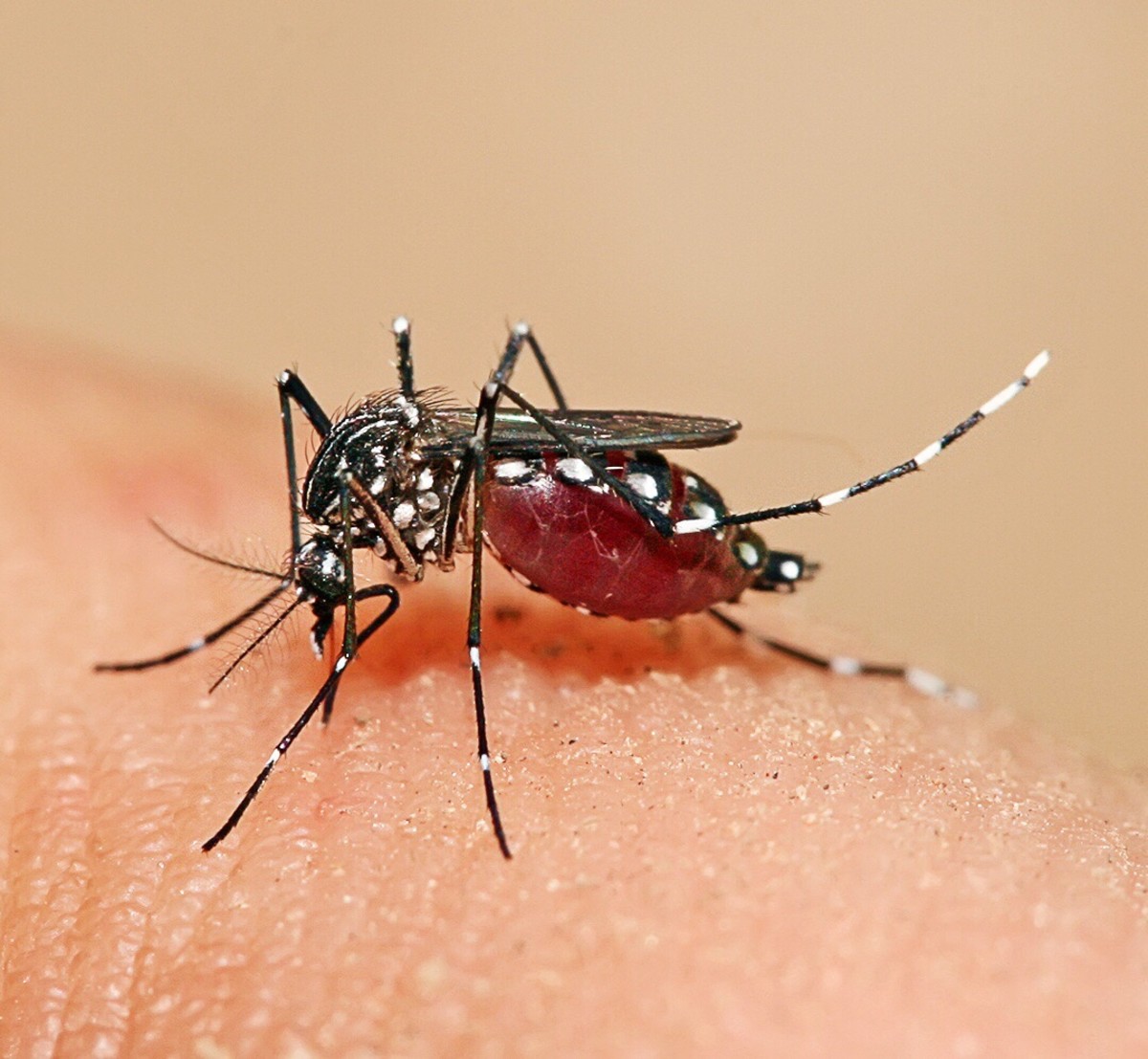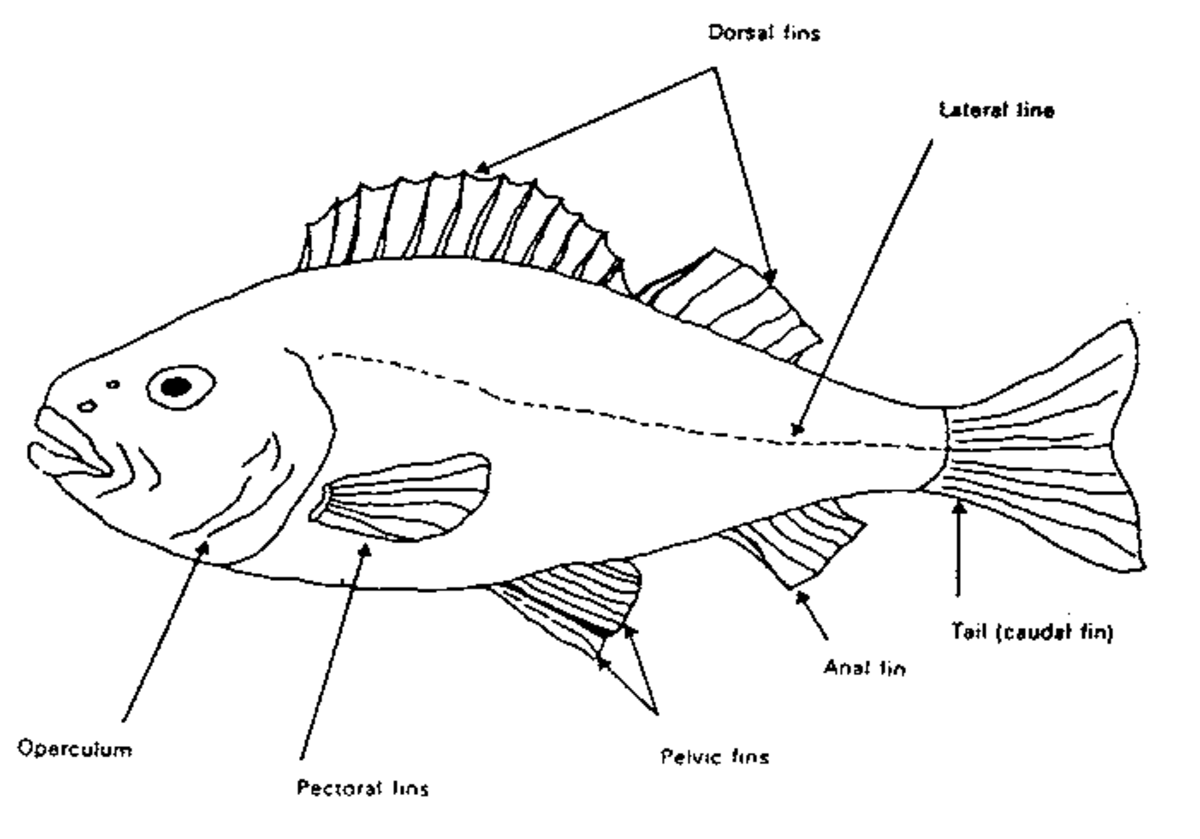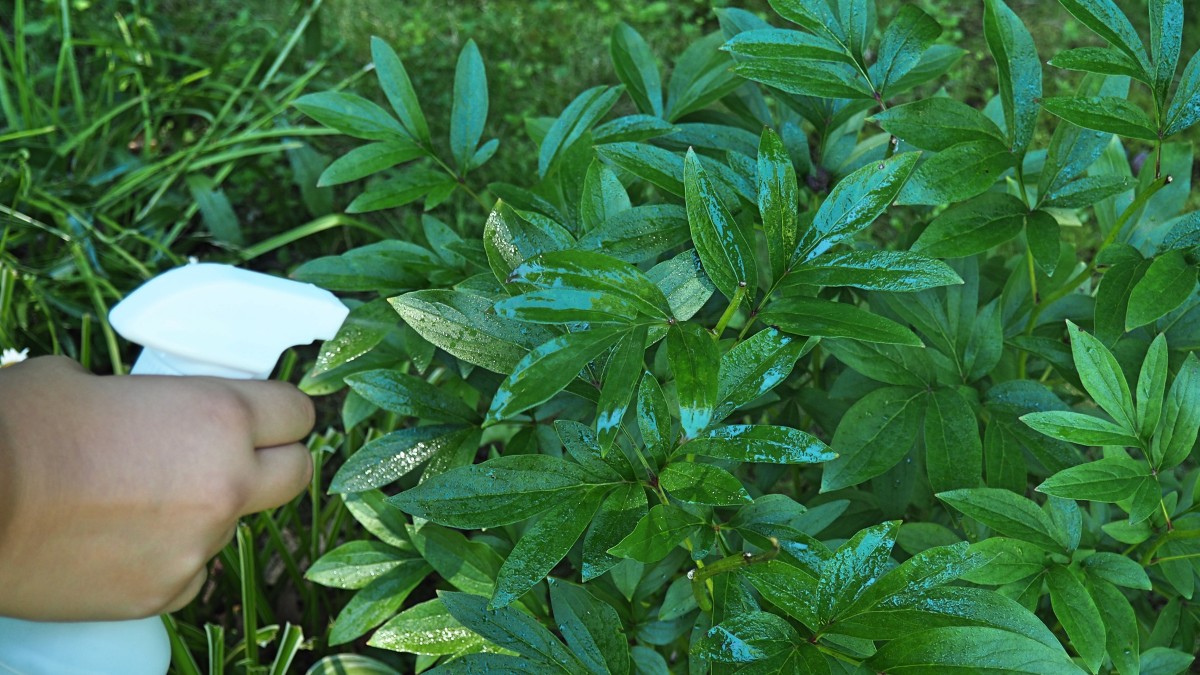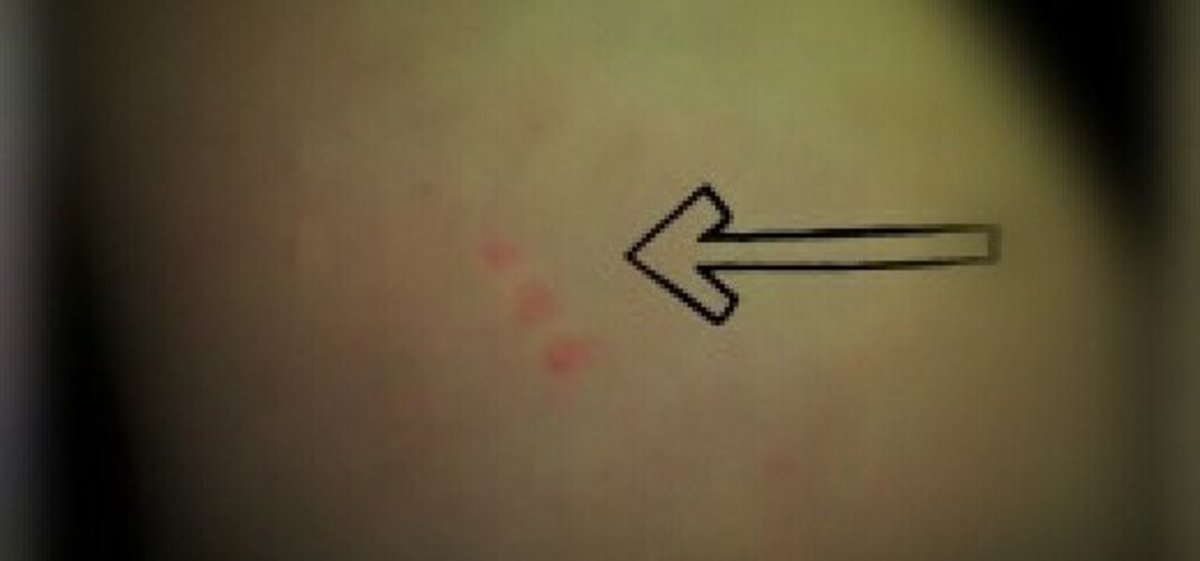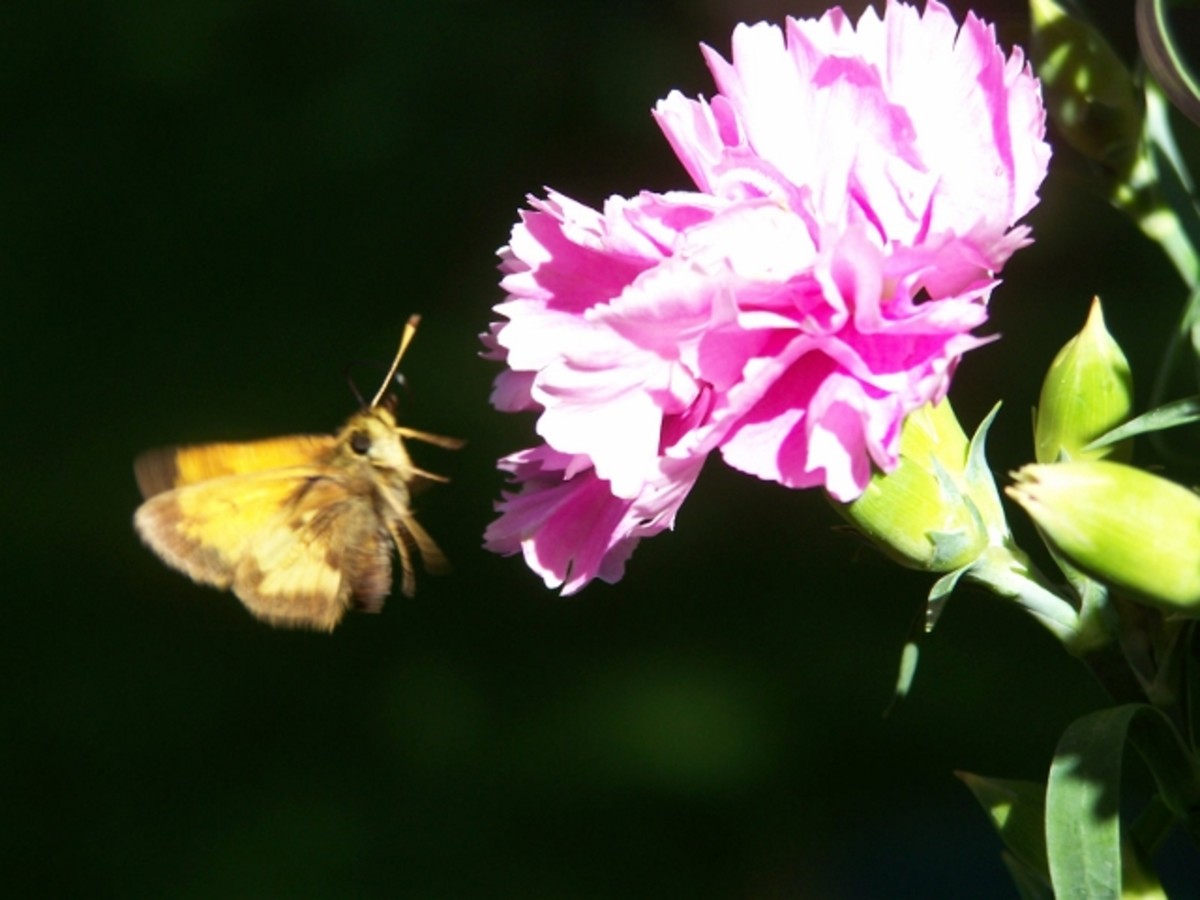- HubPages»
- Education and Science»
- Life Sciences»
- Entomology»
- Insects & Bugs
insect facts - the Aedes mosquito
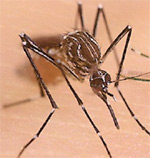
This is the season when, in enjoyment of sunshine, pools and barbeques, the war with mosquitoes begins. Everyone has his or her own secret to avoiding the itch from these welt-provoking pests.
This year there have been reports of sightings of a different mosquito from the usual brown pond-dweller. The new variety is described as being dark, with white spots or stripes. This is cause for concern because such a black and white mosquito may be of the genus Aedes. In high school biology class, the Aedes mosquito is identified as the vector for yellow fever. It is also considered the vector for dengue fever, filariasis and dengue hemorrhagic fever (DHF).
Aedes is a genus of mosquitoes that are small, black and white insects which were originally found only in tropical and subtropical areas, but are now spread throughout the world except in Antarctica, thanks to the activity of humans. However, the eggs do not survive during winter or in cold climates. The species in this genus include Ae. albopictus, Ae. aegypti, Ae. cantator, Ae. cinereus, Ae. rusticus, and Ae. vexans. Aedes aegypti is most common in areas that lack piped water systems, depending on the water storage containers to lay their eggs. They have also been found in open or unsealed septic tanks, storm drains, wells, and water meters.
Aedes mosquitoes are closely tied to humans, not just for feeding off human blood (their preferred meal), but also because humans offer convenient living conditions. They “bite” during the day time and can even bite indoors, hiding in cool dark places such as closets, under beds and behind curtains. Their favorite egg-laying sites are wide-mouthed dark containers in the shade, such as flower pots, discarded tires, plates under potted plants, cemetery vases, flower pots, buckets, tin cans, clogged rain gutters, ornamental fountains, drums, water bowls for pets, and birdbaths. The eggs can be found just above the water line in containers which afford the mosquito a shelter; she lays her eggs on the side of a wet container, a tree hole or a plant axil; when it floods or rains, the eggs hatch into larvae. In about a week the larva changes to a pupa, and two days later becomes a hungry mosquito. The larvae feed on aquatic microorganisms and particulate plant matter, shedding their skin three times as they go through the four larval stages. The pupae do not feed; they simply continue morphing until they become flying insects. This entire cycle from egg hatching to mosquito takes 8-10 days at room temperature. The adult insect lives for about three weeks. With a short flight range of less than 200 meters, the mosquitoes are found near their own egg-laying sites. Females will lay dozens of eggs up to five times during their life cycle.
Aedes will also bite dogs and other mammals. Only females bite, because they need the blood to lay their eggs about three days after feeding. Both males and females feed on plant nectar.
Aedes mosquitoes are called “vectors” because they attain the tiny viruses by sucking blood from an infected animal or person, then infect the next person or animal they feed on. The virus does not affect the mosquito at all.
Lymphatic filariasis
In Polynesia. Aedes polynesiensis is a vector for human lymphatic filariasis. This disease attacks the lymph system and, if chronic, can eventually cause elephantiasis. In this case, worms are the cause rather than a virus. The adult worms stay in the tissue and release larvae into the host’s bloodstream where the larvae are taken up by Aedes or black flies. While in the vector, they become infective larvae, ready to be transmitted to the next host by the vector. Thanks to a concerted effort by the International Task Force for Disease Eradication, the diseases from these worms has been prevented and treated successfully except in specific known pockets.
Dengue viruses
Dengue fever is caused by any one of four related viruses (DENV 1 – DENV 4). A more severe form of Dengue, Dengue hemorrhagic fever, is caused by the same viruses. These viruses are related to the viruses that cause West Nile infection and yellow fever. Dengue is a leading cause of illness and death in the tropics and subtropics. There are no vaccines to prevent dengue, but prompt treatment can substantially lower the severity of the disease. Serious outbreaks occur somewhat regularly in Puerto Rico, tourist destinations in Latin America and Southeast Asia, Samoa and Guam.
In the Western hemisphere, Aedes aegypti is the most common vector, but in Hawaii and the Eastern hemisphere, Aedes albopictus is the important vector. Ae. albopictus (common name, Asian tiger) is also known for transmitting West Nile, Eastern equine encephalitis, chikungunya, dog heartworm and Japanese encephalitis parasites. In temperate (four-season) climates, the eggs will remain alive through the winter. The Asian tiger mosquito has a single longitudinal silvery dorsal (top) stripe and white banded legs. An aggressive biter, it is mostly an outdoor mosquito found in gardens around a residence, showing a preference for tree holes and bamboo internodes that have water. This insect also bites animals which do not carry the dengue viruses, lowering the chances of it becoming a vector. However, their eggs can withstand desiccation (lack of water) for several months. Therefore, even if managers kill the other three stages of the mosquito, a good rain will bring them back. Aedes albopictus is very aggressive and rapid, evading attempts to swat it.
Symptoms of Dengue are unclear and easily mistaken for the flu, so if a person has been traveling south of the United States, or in other known dengue areas, she or he should check with a doctor as soon as symptoms occur. There are no specific medicinal treatments for dengue fever; pain relievers help, but aspirin might worsen bleeding. There is no vaccine for these DENVs, although one is in development. If a person has recovered from dengue fever, he will have an immunity only to that specific virus, not the other three; and if he is infected two or three more times, his risk of developing severe dengue hemorrhagic fever increases.
Yellow fever
The Aedes aegypti mosquito is also known as the Yellow Fever Mosquito, since it is the primary vector for this disease. These mosquitoes are very resilient and able to bounce back from droughts or control measures taken by people. As with all Aedes mosquitoes, the eggs can remain desiccated for a long time, waiting for water to re-liven them. The yellow fever mosquito is known to make adaptations. For instance, in Puerto Rico, it can undergo its immature development in broken or open septic tanks. It has a bright silvery lyre-shaped dorsal (top) pattern with white banded legs. This sneaky biter occupies urban areas with or without vegetation; it bites, rests and lays eggs both indoors and outdoors. Because this mosquito prefers blood meals from humans and monkeys over other animals, it is more likely to be a viral vector. Most of the water containers used for eggs and immature development are within or near households.
The biting behavior of Aedes aegypti is to come upon a human from behind, and therefore not be noticed. They bite the elbows and ankles, where blood is near the surface of the skin. They are most active for two hours after sunrise and for several hours before sunset. If an area is well lit, they can even bite at night.
Yellow fever is an acute viral hemorrhagic disease which causes hepatitis and therefore jaundice in the patient (hence the term yellow). It is believed to have originated in Africa and possibly brought to the Americas on slave ships. If the case of yellow fever is uncomplicated, the prognosis is excellent. This disease is most commonly a mild, self-limiting illness. Survivors will have no residual organ damage. If, however, the patient goes into the toxic phase, it can be fatal.
The virus is found mainly in tropical areas of Africa and Latin America. There is no specific treatment for this disease, just easing of symptoms, and again avoiding medication which increases bleeding. However, there is good news – there is a vaccine for yellow fever which provides immunity within 30 days for 99% of the people vaccinated. The vaccine is safe, affordable, and offers life-long immunity with a single dose. Yellow fever is difficult to diagnose, having similar symptoms to malaria and many other serious diseases. But a blood test will detect it. Travelers, particularly those arriving to Asia from Africa or Latin America must have a certificate of yellow fever vaccination.
Prevention
All Aedes mosquitoes should be viewed as possible vectors for diseases of all types. So despite their pretty markings, these small insects should be avoided. When traveling to tropical and subtropical destinations, find out if yellow fever is common in the area and if so, the traveler should get a vaccination a month before departure.
The rest of the practices to prevent mosquito bites apply to travelers as well as residents in high-risk areas. Stay in air-conditioned or well-screened housing. Even in this type of residence, a net over the bed is especially beneficial to avoid night flyers. Avoid outdoor activities at dawn, dusk and early evening. Wear protective clothing – long-sleeved shirt, long pants, socks and shoes. Use mosquito repellent. Permethrin can be applied to clothes, shoes, camping gear and bed netting; you can actually purchase clothing made with permethrin already embedded in it. On any exposed skin, use a repellent with at least 10% of DEET, IR3535, picaridin or oil of lemon eucalyptus in it. Use repellent even indoors. Use mosquito netting over infant carriers, cribs and strollers.
The habitat for the Aedes mosquitoes should be modified to avoid breeding as much as possible. Remove old tires, cans and flower pots, anything which could collect water. Regularly change the water in outdoor bird baths and pets’ water dishes. Fill tree holes and other plant cavities with sand or soil. Dump the water from overflow dishes under potted plants and flower pots. Check that gutters are not holding water and cover rain barrels with tight screening.
On a community level, control programs against wild mosquitoes in forested areas are not practical nor very effective. Insecticides can be applied to water where the mosquitoes develop. Ornamental fountains should be emptied when not in use. Have the Water Authority replace broken water meters. Repair broken septic tanks and cover vent pipes with wire mesh. Protect boats and vehicles from rain with tarps that don’t accumulate water. Maintain swimming pools in good conditions and keep them properly chlorinated. Empty plastic swimming pools when not in use and turn them upside down. Place tight lids on containers used for water storage. To verify that there are no larvae or pupae in stored water, empty the container, wash the walls with a brush to remove eggs, rinse and cover. Maintain running water in fountains, artificial lakes or estuaries. Place fish such as guppies and betas in ornamental fountains that are always filled with water. Call the health authorities when large numbers of mosquitoes are noticed.
The Aedes mosquitoes do not lay eggs in ditches, drainages, canals, wetlands, rivers or lakes, so pouring chlorine into these habitats is useless and will harm aquatic life.
While all of this may sound like the sky is falling, such measures will also keep your back yard free of mosquitoes hovering over your hamburgers and thereby give you an itch-free barbeque.
